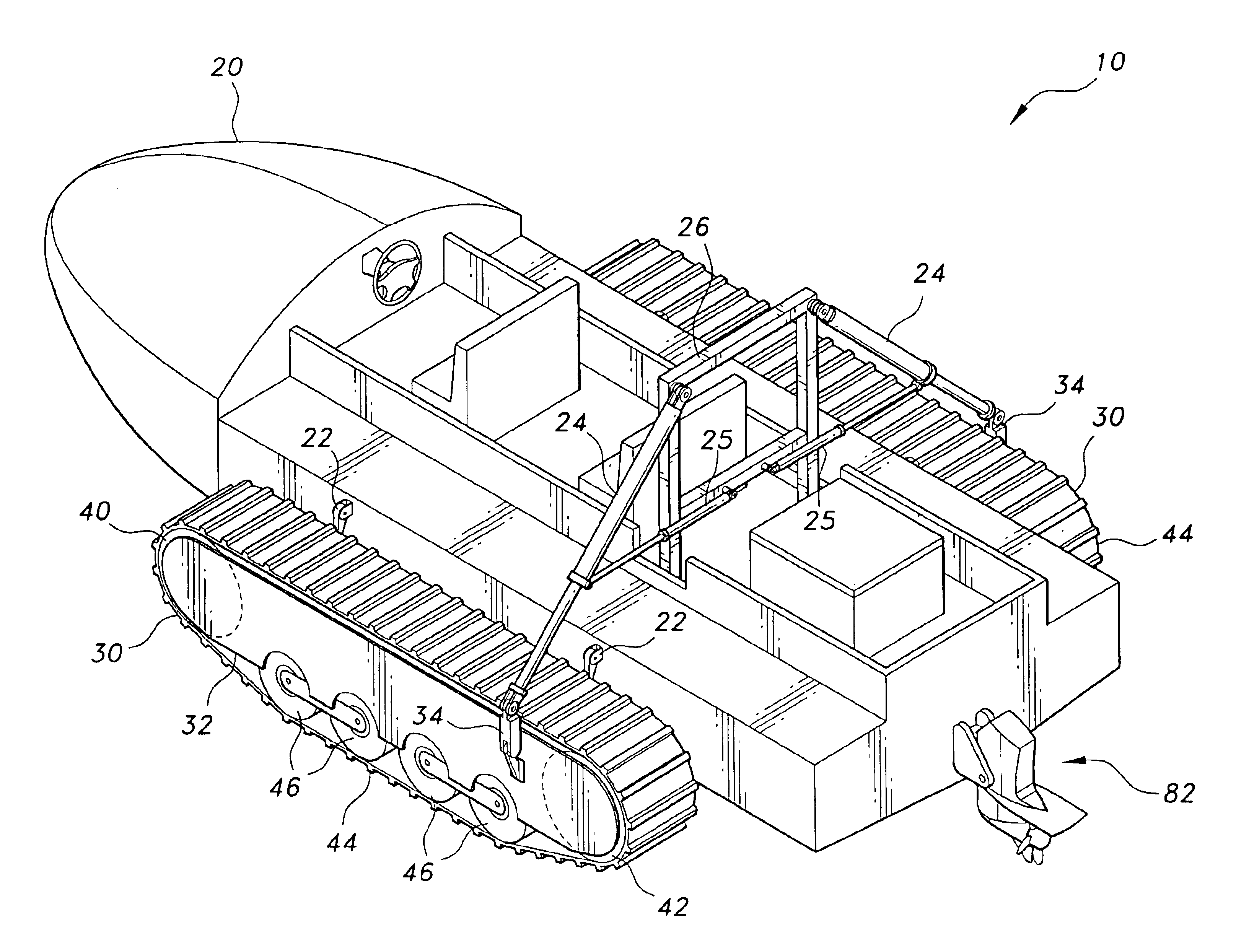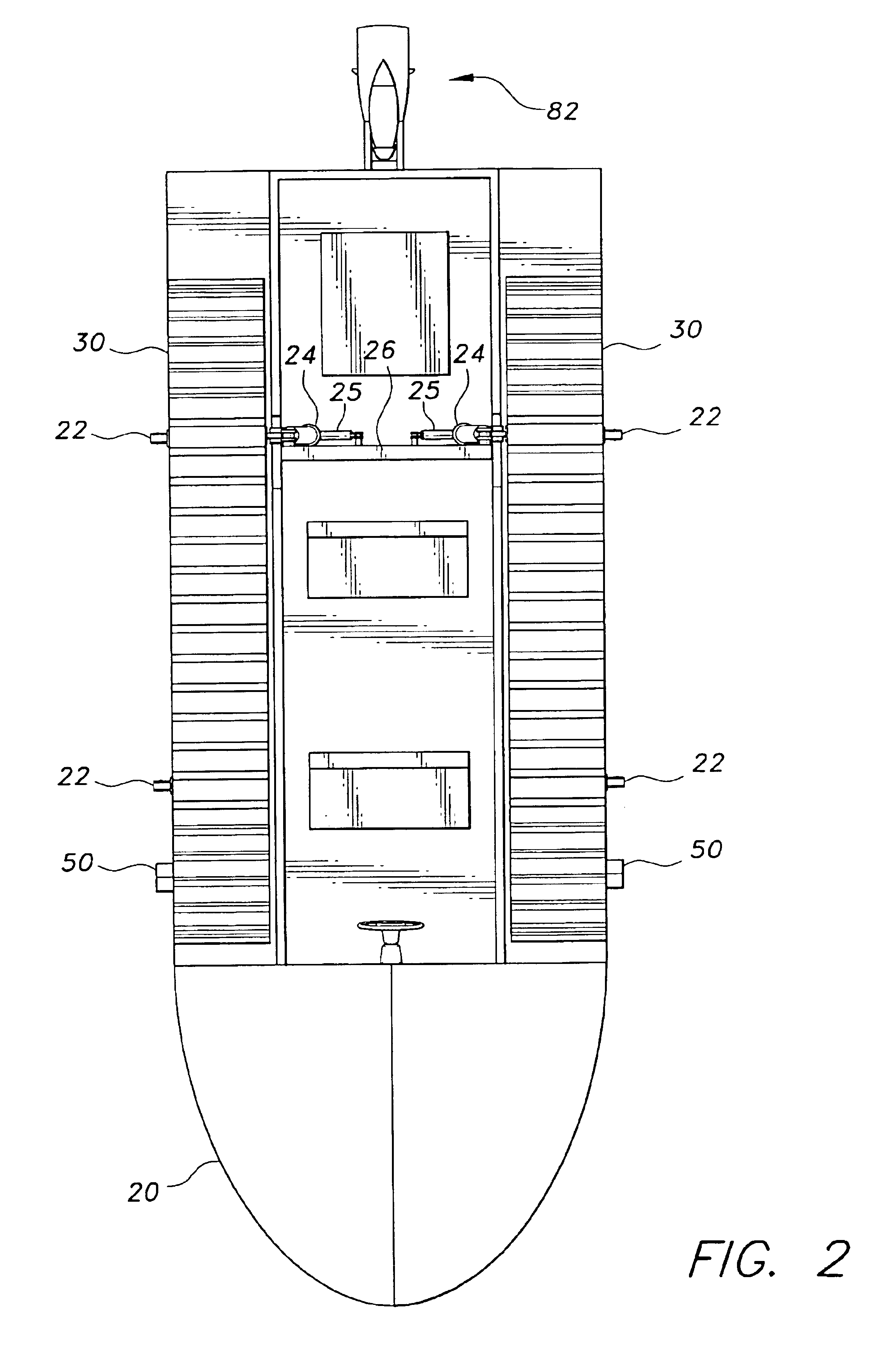Amphibious vehicle
a technology for amphibious vehicles and boats, applied in the direction of boats, marine propulsion, retractable wheels, etc., can solve the problems of compromising the maneuverability of the vehicle in the water, presenting certain limitations to the use of the vehicle, and the inability of amphibious vehicles to operate at a high speed in the water. achieve the marine performance and maneuverability of a conventional boa
- Summary
- Abstract
- Description
- Claims
- Application Information
AI Technical Summary
Benefits of technology
Problems solved by technology
Method used
Image
Examples
Embodiment Construction
[0040]The present invention is an amphibious vehicle, designated generally as 10 in the drawings. Referring to FIGS. 1-3, the amphibious vehicle 10 includes a hull 20, and track assemblies 30. The track assemblies 30 are mounted longitudinally alongside the hull 20 by hinges 22. The hinges 22 allow the track assemblies 30 to be rotated between a lowered position, where they support the amphibious vehicle 10 and provide traction and propulsion during land operation, and a raised position, where they rest on the deck of the hull 20 during marine operation, clear of the waterline of the hull 20. With the track assemblies 30 clear of the waterline during marine operation, they present no drag to hinder marine performance. The track assemblies 30 provide propulsion for land operation, while a marine outdrive 82 propels the amphibious vehicle 10 during marine operation.
[0041]The track assemblies 30 are of a generally conventional construction. Outboard and inboard support members 32, 33 a...
PUM
 Login to View More
Login to View More Abstract
Description
Claims
Application Information
 Login to View More
Login to View More - R&D
- Intellectual Property
- Life Sciences
- Materials
- Tech Scout
- Unparalleled Data Quality
- Higher Quality Content
- 60% Fewer Hallucinations
Browse by: Latest US Patents, China's latest patents, Technical Efficacy Thesaurus, Application Domain, Technology Topic, Popular Technical Reports.
© 2025 PatSnap. All rights reserved.Legal|Privacy policy|Modern Slavery Act Transparency Statement|Sitemap|About US| Contact US: help@patsnap.com



